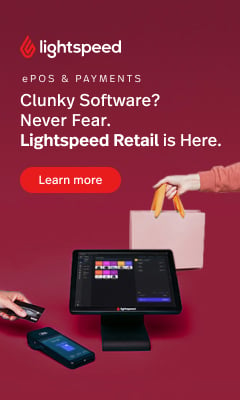How to ensure your EPoS implementation delivers
Preparation, implementation and training – factors to ensure successful project delivery
Choosing new retail software for EPoS and head office systems can be a significant investment in time, money and resources. Especially if you want a smart omni-channel solution integrating all parts of your business with real-time visibility for stock, sales and customer data.
There are certainly plenty of choices, but selecting the right technology is one thing, implementation is something else entirely and it’s here that the real work starts and where many retail technology projects can fail.
So, what are the steps you can take to improve the implementation process and how can you prepare your business to ensure a high-quality outcome? Collaboration with your retail systems partner is key and together with your own project team they should help to set milestones and guide you through the process.
An essential starting point is to review your existing workflows and business processes to understand how these will transfer to the new environment. This will also help to highlight where changes will be required and inform any development work that might be needed. Some workflows will almost certainly be different to how you currently operate your business and the system you have chosen may require you to do things in a different way.
This review should be quite detailed, looking at individual retail functions and identifying procedural differences. For example what is the returns process, what happens at the till and where is the data recorded? Procedural and technical differences should be recorded as your knowledge builds, and these in turn will inform your training and communication plans.
This stage is also an opportunity to improve and optimise work practices and involving key business functional areas in the process is crucial – leading to fewer surprises when the system is turned on.
Moving your historical/existing data across to the new system is another major area to consider and if any project runs over this is where it is likely to happen. So, planning how you will accomplish this and the format for the data should be a major focus.
Importing your data, providing it supports standard CSV formats, will clearly be much faster than manual input. But check that the data fields in the new system are consistent with your own and format things accordingly.
Work out what you need to migrate over – data on products, suppliers, stock and customers for example will be essential but you’ll likely need historical sales data too. Agree what data structures and categories you need across your business and test the process to see how long it is likely to take.
Taking the opportunity to cleanse your data is invaluable. This can be laborious, but time invested here will pay dividends and make the whole process easier. Of course, your data is changing all the time, so the final data migration won’t occur until you are ready to go live.
Development and testing should start from day one, whether it is tuning features and functionality in the new system to reflect your business, or more involved development work to integrate with 3rd party systems – a warehouse management system, your e-commerce provider, or establishing links to online marketplaces, including Amazon and Channel Advisor for example. Your supplier should take the lead here and project manage things, but you should expect a documented timeline with clear goals.
Training on the new system will quickly follow, but not so early that staff forget new features and functions. By this point consultations to customise the system and establish capabilities with senior managers will already have been accomplished. A communication plan to establish buy-in and bring staff along with you will also help.
A related subject is system documentation and user manuals. Are these included or will you be reaching for the phone every time you have a question?
As you near final implementation you need to plan the process and work out how you are going to do it. Will new hardware and networks be involved? Will Wi-Fi play a part and if so how will you test it. Will there be a pilot installation to trial the new system?This will establish how the system performs and pinpoint any issues. It also provides a further opportunity for live training.
Outcomes here will determine how the system is rolled out.
You’ll want to ensure zero or minimal interruption to your business so switching systems typically occurs overnight and its then that final ‘live’ data on stock levels and sales history to be migrated over. Making the right choice of implementation partner will make the whole process as stress free as possible.














